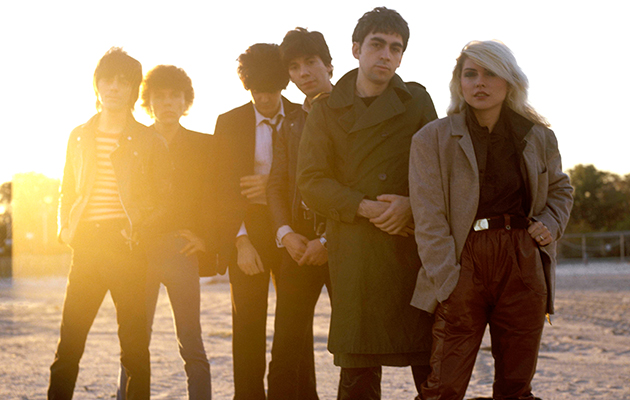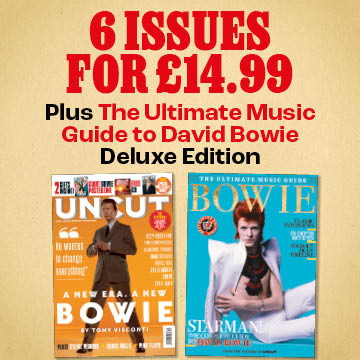With Blondie’s new album Pollinator now on sale, I thought I’d dust down my cover story on the band from Uncut Take 229.
The piece largely focussed on the band’s early years, set against the backdrop of New York’s economic crisis, rising crime and flourishing downtown arts scene. Aside from Debbie Harry, Chris Stein and Clem Burke from the band, Jim Jarmusch, Lenny Kaye and John Waters were among the other eyewitnesses who contributed to the piece. Follow me on Twitter @MichaelBonner
____________

One of Debbie Harry’s most treasured possessions in the earliest days of Blondie was a 1967 Chevrolet Camaro coupe. “It was turquoise, teal colour, four on the floor,” she recalls. “It originally belonged to my mother. The car got stolen a couple of times and then abandoned. It probably looked a whole lot better than it was. A Camaro was a hot car. One time, I know the car got abandoned because the linkage was bad and it got stuck in reverse. That was interesting, driving round New York in reverse. You took your chances. Of course, New York’s changed now because it’s all very gentrified.”
It transpires that New York alone in having gentrified since the mid-1970s. Harry – and Blondie’s – trajectory from downtown scenesters to uptown habitués has been almost as profound as the transition made by the city itself since Harry first moved there in the late Sixties. “There was a lot of freedom, a lot of underground sentiment in music and the arts,” Harry recalls. “It was a direct hangover from the 1960s, which was all about freedom. Freedom of this, freedom of that. Freedom of underwear, freedom of love. The entire hippy nation.”
Culturally stitched into fabric of alternative New York since the early Seventies, Blondie have always been attuned to the city’s artistic achievements – Phil Spector girl groups, Brill Building song craft, the wiry energy of CBGB, Studio 54’s disco gloss and South Bronx hip hop battles. The band’s connections among New York’s vibrant community of artists, photographers, filmmakers and designers included Andy Warhol, Jean-Michel Basquiat, Amos Poe and Stephen Sprouse.
Blondie’s evolution corresponded with an unsettled time in New York’s history. The city was close to bankruptcy. There were riots, strikes, a blackout and the Son of Sam serial murders. “New York was a different animal then,” says Chris Stein. “The whole culture was considerably different, too. Everything was getting shittier and there were more people fucked up on bad drugs, there was more violence.”
“We had an economic crisis,” says filmmaker Jim Jarmusch. “A lot of the East Village was still very wild and dangerous. There were abandoned buildings. It was crazy, but there were a lot of things growing between the cracks.”
Against the backdrop of New York during these bombed out years, Blondie’s ascent takes place in half-forgotten bars on the Lower East Side, a basement recording studio in Queens, the rooftop of Radio City Music Hall, a Little Italy neighbourhood and other corners of the city. Just how did Blondie – operating out of run down apartment blocks during an especially blighted period in New York’s history – become one of the biggest groups of their generation?
“They were always underestimated in the scene, and somewhat unfairly,” says Lenny Kaye. “The music they played had such traditional roots – they weren’t avant gardists, by any means – and I think it terms of CBGB’s, that not only caused them to be underdogs but it was also the secret to why they had worldwide success. In a way, they were the most accessible in a scene where accessibility wasn’t actually regarded as a virtue. Within terms of performance Debbie is such a shining light. She is able to project this spirit of innocence and mild aggression and verve so well from the stage.”
Reflecting on Blondie’s earliest days, Debbie Harry admits, “We had a really hard time being heard. DJs, radio, record labels, they were really not into it. You push harder, or you walk away. We had moments of doubt, I’m sure. We all struggled with it. But it’s like a virus, in a way. You get bitten by this bug, being a rock star or musician or whatever it is, and you really can’t get away from it.”



